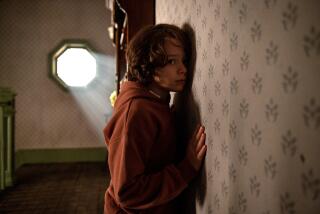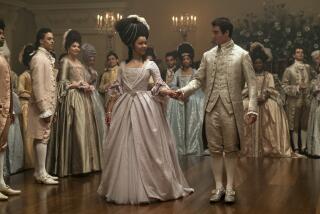Everything is illuminated
- Share via
THE summer my son Noah was 5, he went on a “Charlotte’s Web” kick. Or no, not kick: That doesn’t quite capture the binge-like insistence of it, the way E.B. White’s 1952 children’s classic became the centerpiece of his life. For months, we read it to him every night, chapter by chapter, beginning again each time we reached the end. By the time September arrived and Noah’s attention had led on other entertainments, we had read “Charlotte’s Web” perhaps 10 times, and I (who had never loved the book as a child) had come to appreciate just what a remarkable achievement it was.
As any parent knows, the trick of reading to kids is to keep your boredom at bay. Of the thousands of children’s titles published each year, few remain compelling after the first or second go-round. Yet “Charlotte’s Web” is that rare exception, a book that not only held me but drew me in more deeply with each visit to Homer Zuckerman’s barn. It is a story with everything -- life, death, love, loss and an almost aching sense of yearning, tempered by a belief in cosmic justice. So unsentimental is White’s vision, so heartbreaking his wisdom, that the publisher, Harper & Brothers, urged him to soften the ending, which they felt would disturb the book’s young readers. He didn’t, of course, and half a century later “Charlotte’s Web” has sold 45 million copies, which, if nothing else, offers a convincing refutation of the notion that we should protect our children from the complexities of the world.
White died in 1985 at age 86, so it’s impossible to know what he would have thought about the big-budget live action film of “Charlotte’s Web” that comes out this week. (He was approached about the screen rights in the early 1950s, and signed off on an animated version that appeared in 1973.) He might, however, have taken issue with the 18-plus tie-ins and adaptations that have been released in conjunction with the current movie, a veritable storm of publishing that includes deluxe editions, activity books, sticker sets, picture books and “I Can Read” early readers.
Such a deluge does precisely what White resisted half a century ago -- diluting his story’s toughness and clarity in favor of something safe and bland. Even the new hardcover of “Charlotte’s Web” (Harper Entertainment: 184 pp., $16.99) -- “The Original Novel by E.B. White,” it trumpets -- replaces Garth Williams’ iconic cover illustration with a nearly identical photo of the film’s star, Dakota Fanning, clutching a newborn pig. It’s almost enough to make the most devoted reader cynical, were it not for the enduring power of the book.
What makes “Charlotte’s Web” resonate? The answer has to do with the simplicity of the story. In “Letters of E.B. White” (HarperCollins: 714 pp., $35), first published in 1976 and newly reissued in a revised and expanded edition, the author puts it this way: “As to your notion of an allegory, there is none. ‘Charlotte’s Web’ is a tale of the animals in my barn, not of the people in my life. When you read it, just relax. Any attempt to find allegorical meanings is bound to end disastrously, for no meanings are in there. I ought to know.”
White’s being coy here, making a joke at his own expense, but in essence he’s telling the truth. The beauty of “Charlotte’s Web,” after all, is that it can be understood by anyone, at whatever stage of life. The world it portrays is recognizable, marked by ebb and flow, the inevitable movement of the seasons, the enthusiasms of children and the doubts of adults. When Fern, the 8-year-old girl at the heart of the story, tells her mother that she talks to the animals, the woman visits the local doctor. Eventually the conversation turns to the words that have appeared in the spider Charlotte’s web. “I don’t understand it,” the mother laments, “and I don’t like what I can’t understand.” The doctor’s response is firm but tender, a reflection of the gentle air of wonder that permeates the book. “None of us do,” he tells her. “I’m a doctor. Doctors are supposed to understand everything. But I don’t understand everything, and I don’t intend to let it worry me.”
Here, White subtly undermines our assumptions, asking us to reconsider what we think we know. This allows “Charlotte’s Web” to transcend children’s writing and become a piece of literature on its own terms. Read five pages and you know you’re in the hands of a master, one who understands not only the power of stories but how they operate.
There are the fine details, the sharp specifics: “The barn was very large,” he writes, “It was very old. It smelled of hay and it smelled of manure. It smelled of the perspiration of tired horses and the wonderful sweet breath of patient cows. It often had a sort of peaceful smell -- as though nothing bad could happen ever again in the world.” There are the clearly drawn characters, and there is humor, as in this account of Templeton the rat, who “had no morals, no conscience, no scruples, no consideration, no decency, no milk of rodent kindness, no compunctions, no higher feeling, no friendliness, no anything.” No milk of rodent kindness? That’s my favorite line in the book, playful and piercing, a pithy turn of phrase that tells us something fundamental -- not just about Templeton but about the nature of the world.
Partly, this is a matter of language; when it comes to constructing an English sentence, White is unparalleled. His writing constantly reveals new depths, new facets, which is one reason I was able to read “Charlotte’s Web” so many times and not be bored. Yet more to the point, it’s about the quality of his observations, our sense that White is not pulling his punches but telling the unvarnished truth. He follows his description of Templeton with two declarative sentences -- “He would kill a gosling if he could get away with it -- the goose knew that. Everybody knew it.” -- that are remarkable in their clarity, their unwillingness to sugarcoat.
The same is true of the book’s ending, which portrays Charlotte’s death as an unavoidable part of life. This is the material to which those long-ago executives at Harper & Brothers objected, but without it the story would have no stakes, no closure, no dramatic arc. Charlotte, after all, is a philosopher, and her metier is the natural world. She reflects on it with her own brand of wisdom, choosing to recognize that all is fleeting in the face of time. “Did you ever hear of the Queensborough Bridge?” she asks the young pig Wilbur one afternoon, describing it as a kind of web. When he asks if people use the bridge to catch flies, Charlotte sums up the futility of human ambition as succinctly as any character ever has. “No,” she says. “They don’t catch anything. They just keep trotting back and forth across the bridge thinking there is something better on the other side. If they’d hang head-down at the top of the thing and wait quietly, maybe something good would come along. But no -- with men it’s rush, rush, rush, every minute. I’m glad I’m a sedentary spider.”
That’s a weighty moment, and its presence is exactly what gives “Charlotte’s Web” such power. Even when the story slips the bounds of mundane reality and becomes fantastic -- talking animals? words woven in a spider web? -- it remains almost unbearably familiar. Like a universal memory, it speaks to us, no matter what our age.
I don’t know how closely the new movie of “Charlotte’s Web” follows the book, although one of the finest things about the story is the care of its construction: Unravel a single strand and the entire web evaporates. No matter, the original remains. “Wilbur never forgot Charlotte,” White writes in the closing paragraph -- and, in the process, evokes his own accomplishment as well.
“She was in a class by herself. It is not often that someone comes along who is a true friend and a good writer. Charlotte was both.” *
More to Read
Sign up for our Book Club newsletter
Get the latest news, events and more from the Los Angeles Times Book Club, and help us get L.A. reading and talking.
You may occasionally receive promotional content from the Los Angeles Times.









